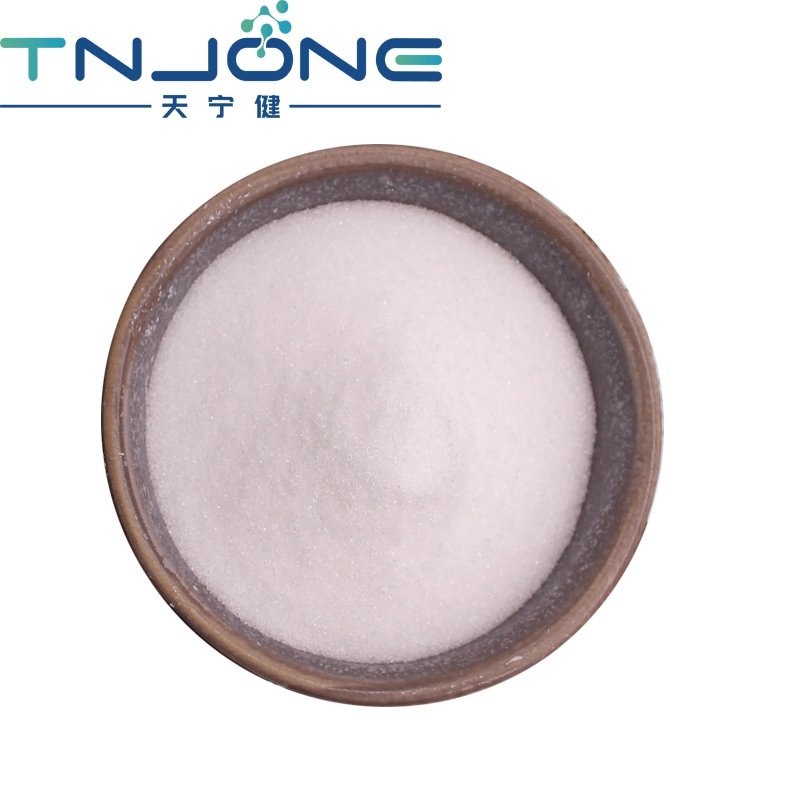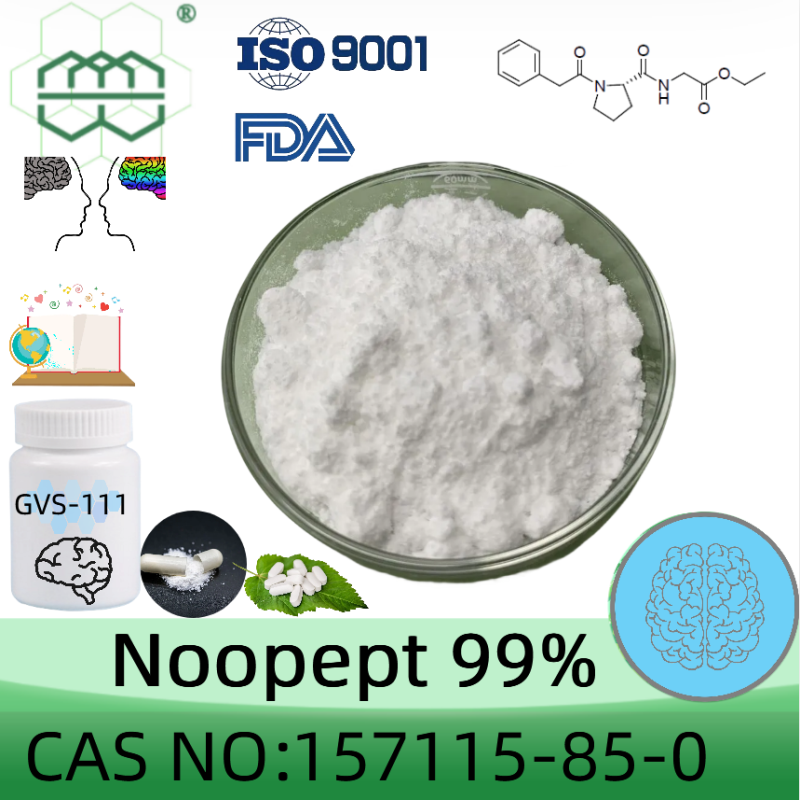The detection method of chloramphenyl residue in animal food is simplified and analyzed.
-
Last Update: 2020-08-31
-
Source: Internet
-
Author: User
Search more information of high quality chemicals, good prices and reliable suppliers, visit
www.echemi.com
, Zaxi poor da CentralLa Jiang Jingyu second Ren Zhuoga Liu Asia Tibet Autonomous Region Food and Drug Inspection Research Institute . Abstract: For two consecutive years in the market, catering industry randomly selected 150 animal food chloramphenyl testing, using high-efficiency liquid chromatography series triple tetrapole mass spectrometry (LC-MS-MS) assay, compared with the comprehensive detection method GB/T 22338, Ministry of Agriculture No. 781 Proclamation-2-2006 and GB/T 20756. The operation procedure is simplified, and the detection time limit is improved, the detection limit of the method is 0.07?g/kg, the linear range is 0.5 to 100 ng/mL (r-0.99993), the recovery rate is 99%, and the RSD is 2.6% relative to the standard deviation. Two years of test results show that the use of chloramphenyl, a total of 5 samples detected chloramphenyl, the failure rate of 3.3%, in order to ensure the safety of animal food in the catering industry, it is necessary to strengthen the supervision of veterinary drug residues, to resist the abuse of antibiotics in animal food.
key words: animal food chloramphenyl testing . 1 Introduction
Chloramphenyl can reduce white blood cells, the human hematopoietic system is extremely toxic, especially will kill granulocytes, thus affecting the maturation of red blood cells, and easy to cause regenerative anemia, can damage vision, cause acute toxic epiderm laxity, so that the eyelids adhesion and the production of corneal scarring. In addition, chloramphenyl has a greater impact on the elderly, newborns, premature babies, and people with liver and kidney
,
.
with the improvement of economic living standards, people's food quality requirements are also improved, and gradually realize that antibiotic feed additives in the economic benefits behind the existence of greater drawbacks. Therefore, most developed countries and regions banned antibiotics, and China's Ministry of Agriculture announcement No. 235 "animal food veterinary drug maximum residue limit" Appendix 4 also stipulates that chloramphenyl and its salts, esters (including amber chloramphenyl) in all animal food is prohibited to use drugs, and may not detect
.2 Experiment
2.1 Samples, Instruments, Standards and Reagents
2.1.1 Samples: Purchased in the market, respectively, randomly selected livestock and poultry raw meat, aquatic products, honey a total of 80 batches, the catering industry randomly selected 70 batches of cooked meat processing products.
2.1.2 Instrument: High-efficiency liquid chromatography series triple-four pole mass spectrometry LC-MS-MS (High-efficiency liquid chromatography, Isazu Corporation, Japan; Mass Spectrometry, AB Corporation of the United States);
2.1.3 Standard: Name and source of standard products, see Table 1.
2.1.4 reagents: experimental water for secondary distilled water, sodium chloride, positive hexane, acetylene for analysis purity, methanol, ethyl acetate for color spectrum purity. 2.2 Instrument Conditions
2.2.1 Efficient Liquid Chromatography Conditions
Same sample volume: 10 ?L; column temperature: 40 degrees C; Flow rate: 0.8mL/min, flow phase and gradient ratio, see Table 2.
2.2.2 mass spectrometry conditions:
ion source: ESI; 2.3 Control preparation and sample handling
2.3.1 Control preparation
chloramphenyl standard working fluid: accurate amount of standard solution, diluted to scale with methanol and water (3 plus 7) to make a standard working solution with a concentration of 100 ng/mL.
D-5 standard working fluid: accurate amount of internal standard solution, diluted to scale with methanol and water (3 plus 7), to make a concentration of 100 ng / mL of internal standard working liquid.
of the standard curve: precision take the above standard solution working fluid, diluted to 1.0mL with the substate solution, to make chloramphenyl concentration is 0.5, 1.0, 5.0, 10.0. 0, 50.0 and 100 ng/mL, chloramphenyl D-5 internal standard concentration of 20.0 ng/mL, chloramphenyl concentration detection limit concentration of 0.5 ng/mL.
2.3.2 Sample treatment
sample 5.0g placed in a 50mL plastic centrifugal tube, chloramphetamine D-5 internal standard working fluid 200 sL, added acetylene 10mL and 4% sodium chloride solution 10mL, vortex oscillation 30min extraction. Centrifulate at 10min speed 4500r/min and remove the liquid into the new 50mL plastic centrifomal tube. Add n-hexane 5mL, vortex oscillation 3min, 4500r/min, centrifulated 5min, discard the n-hexane solution in the new plastic centrifomal tube, and repeat several times until the fat in the sample is removed. Ethyl acetate solution 6mL, vortex oscillation 5min, 4500r/min, centrifulation 5min, transfer of ethyl acetate layer to 15mL glass centrifus tube, dryed by nitrogen, acetaminach Alcohol and water (3 plus 7) 1mL, vortex 5min to dissolve it, centrifulation at 12000rpm 3min, by 0.22 m membrane filtration, filter fluid sample determination.
3 results
3.1 optimised mass spectrometry conditions
syringe directly into the mass spectrometer, using a full scan of the standard solution of chloramphenyl chloramphenyl and D5-chloramphenyl into the ion source, to find the molecular ion peak of the target compound. The secondary mass spectrometry, scanning the secondary mass spectrometry map (Figure 1) to find fragment ion information, the target compound mass spectrometry parameters CE voltage, DP voltage, EP voltage, etc. to optimize, to achieve the best mass spectrometry conditions.
is . 3.2 Pre-sample treatment optimization
This experiment uses n-hexane to remove fat from the sample, ethyl acetate extraction sample chloramphenyl, vortex and centrifulation, nitrogen blow-drying.3.3 Standard Curve, Detection Limit and Recovery Rate
The standard curve is prepared with a standard solution dissolved substate sample, the standard curve is plotted for quantification, and the effect of the substate effect on the results is eliminated. The curve equation y is 3.44348e
4
x 10951.42692, and the correlation coefficient is 0.99993, see Figure 2.
The sample of this experiment is 5.0g, the fixed volume is 1mL, combined with the detection limit concentration of standard curve chloramphenyl is 0.5 ng/mL, the instrument test signal and noise such as Figure 3 shows, the detection limit of this experiment is 0.07ug/kg.
is . After taking blank samples, 0.03, 0.1mL chloramphenyl standard working fluid 100ng/mL, each parallel 5 copies of the same product treatment, the actual amount of the standard added is 0.6, 2.0 ?g /kg, calculated in Table 4.
4 Conclusion
4.1 Method Simplification
This experiment simplifies the extraction step and improves the detection efficiency, and optimizes the detection method to achieve the best detection conditions, resulting in a minimum detection limit of 0.07ug/kg for this method. Sensitivity was improved and the linear range was expanded to 0.5 to 100 ng/mL (r-0.99993), with a recovery rate of 99% and a relative standard deviation of RSD of 2.6%. It meets the requirements of monitoring and testing chloramphenyl for animal food, and improves the detection time.4.2 Analysis of test data results
samples were purchased in the market, respectively, randomly selected livestock and poultry meat, including beef 20 batches, pork 10 batches, chicken 10 batches, aquatic products 20 batches, honey and bee products 20 batches, a total of 80 batches; The test results showed that 1 batch of beef, 1 batch of chicken, 1 batch of honey, 2 batches of chicken processing products detected chloramphenyl residue, a total of 5 samples were not qualified, the failure rate reached 3.3%. From the above situation, chloramphenyl residue control is still a major problem of
somooth food safety
the detection rate is higher for chicken samples chloramphenyl residues, poultry farming industry using chloramphenyl is more extensive, other types of products also contain chloramphenyl residues, so we should strengthen the source of livestock and poultry and other aquaculture veterinary drug use supervision, while in the enterprise production and catering industry processing should pay attention to processing raw materials.
.
:
Xiong Lin, Li Weihong, etc., overview of drug residue risk factors in meat products.
Journal
Food Safety, Journal of Quality Inspection, Volume 7, Issue 4, April 2016: 1572-1577.
Ministry of Agriculture Proclamation No. 235-2002, animal food veterinary drug maximum residue limit .
Ministry of Agriculture Proclamation No. 781-2-2006, the determination of chloramphenyl residues in animal-sourced foods high-efficiency liquid chromatography - series mass spectrometry method.
22338-2008, the amount of chloramphenyl drug residues in animal-sourced foods is determined.
SN/T 1864-2008, the detection method of chloramphenyl residues in imported and exported animal-sourced foods liquid chromatography- series mass spectrometry method.
, Ma Xiaoyin, etc., ultra-efficient liquid chromatography series triple tetrapole mass spectrometry to determine chloramphenyl residues in honey .J. Journal of Food Safety Quality Inspection, Volume 8, No. 10, October 2017: 3898-3902.
. Zhang Housen et al., high-efficiency liquid chromatography - series mass spectrometry to determine the drug residues of sulfonamide and chloramphenidate in cooked meat products . . . . . . . . . . . . . . . . . . . . . . . . . . . . . . . . . . . . . . . . . . . . . . . . . . . . . . . . . . . . . . . . . . . . . . . . . . . . . . . . . . . . . . . . . . . . . . . . . . . . . . . . . . . . . . . . . . . . . . . . . . . . . . . . . . . . . . . . . . . . . . . . . . . . . . . . . . . . . . . . . . . . . . .
, etc., monitoring and analysis of chloramphenidate in cooked meat products . . . food processing, 2010 09 issue: 154-155.
.
This article is an English version of an article which is originally in the Chinese language on echemi.com and is provided for information purposes only.
This website makes no representation or warranty of any kind, either expressed or implied, as to the accuracy, completeness ownership or reliability of
the article or any translations thereof. If you have any concerns or complaints relating to the article, please send an email, providing a detailed
description of the concern or complaint, to
service@echemi.com. A staff member will contact you within 5 working days. Once verified, infringing content
will be removed immediately.







